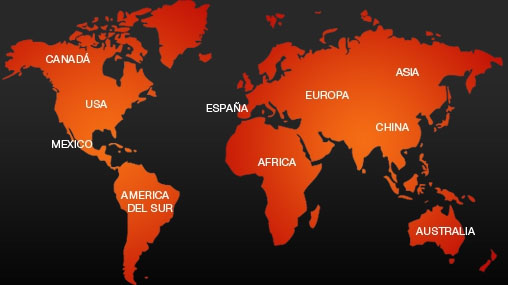- Inicio Acerca de RM Minerales
- Galería de fotos Blog RM Contacto
- Microscopia e instrumentos Pedidos Aviso legal
Copyright 2010-2025
www.rosellminerals.com



La mina Greenlaws se encuentra en Weardale, en la zona norte de los Pennines ingleses, al sur del pequeño pueblo de Daddry Shield. En sus alrededores encontramos minas como la Rogerly, Boltsburn o Heights... Esta mina trabajó la galena entre 1840 y 1901, siendo una de las más importantes minas de plomo de la zona. En 2009 un grupo de coleccionistas empezaron el proyecto "Greenlaws mining project". Después de casi 5 años desemcombrando un pozo de más de 80 metros (270 ft) aparecieron los primeros ejemplares de fluorita, a finales de 2013.
Estos ejemplares que os proponemos proceden de una galería de conexión de este pozo a otro pozo contiguo, a 270 pies de profundidad. Buen brillo y color, con zonación geométrica, y que varía entre el morado al azul marino según la luz incidente. Con caras y aristas definidas y estas características estructuras internas blanquecinas. Extremadamente fluorescentes.
La mina Greenlaws se encuentra en Weardale, en la zona norte de los Pennines ingleses, al sur del pequeño pueblo de Daddry Shield. En sus alrededores encontramos minas como la Rogerly, Boltsburn o Heights... Esta mina trabajó la galena entre 1840 y 1901, siendo una de las más importantes minas de plomo de la zona. En 2009 un grupo de coleccionistas empezaron el proyecto "Greenlaws mining project". Después de casi 5 años desemcombrando un pozo de más de 80 metros (270 ft) aparecieron los primeros ejemplares de fluorita, a finales de 2013.
Estos ejemplares que os proponemos proceden de una galería de conexión de este pozo a otro pozo contiguo, a 270 pies de profundidad. Buen brillo y color, con zonación geométrica, y que varía entre el morado al azul marino según la luz incidente. Con caras y aristas definidas y estas características estructuras internas blanquecinas. Extremadamente fluorescentes.
Nutridos agregados radiales de cristales de hidroboracita, incoloros a blancos, con un lustre adamatino muy intenso. Los análisis ESM-EDS muestran la ausencia de sodio, siendo el magnesio y el calcio predominantes. El boro no se puede observar con esta técnica espectroscópica. Turquía es uno de los mayores productores de boratos del mundo, con unas reservas que sobrepasan las de otros países como USA, China o Rusia. Las explotaciones de boratos se localizan a unas decenas de kilómetros al SE de Kestelek. Fluorescente de tono amarillento junto con anaranjado para la probertita.
Nutridos agregados radiales de cristales de hidroboracita, incoloros a blancos, con un lustre adamatino muy intenso. Los análisis ESM-EDS muestran la ausencia de sodio, siendo el magnesio y el calcio predominantes. El boro no se puede observar con esta técnica espectroscópica. Turquía es uno de los mayores productores de boratos del mundo, con unas reservas que sobrepasan las de otros países como USA, China o Rusia. Las explotaciones de boratos se localizan a unas decenas de kilómetros al SE de Kestelek. Fluorescente de tono amarillento junto con anaranjado para la probertita.
Estos ejemplares nos muestran una pseudomórfosis completa de digenita (trigonal, Cu9S5) sobre pirita (cúbica, FeS2). Podemos observar que los cristales conservan la forma cúbica original, con las aristas ligeramente curvadas y las caras parcialmente cubiertas de malaquita de tonos verdes. Una curiosidad española para los amantes de las pseudomórfosis. Analizado.
Agregado muy estético de cristales tabulares de marcasita muy definidos, brillantes, con caras y aristas muy definidas. Presenta un par de roturas que no son visibles, pero perfecto por el resto. En matriz de cuarzo.
Ejemplar de una localidad muy poco conocida. Se trata de agregados de cristales de plata, de intenso brillo y tonos entre el blanco al dorado. Se disponen sobre una matriz con cuarzo y óxidos de hierro con la que contrastan.
Esta muestra tiene su orígen en los placeres de la localidad tipo para la especie. Bajo la lupa se pueden ver varias pepitas pequeñas de esta aleación, acompañadas de varios magnetita negra (octaedros), epidota, zircones... La awaruita es una aleación natural de hierro y níquel con composiciones dentro del rango Ni3Fe-Ni2Fe. Algunos de estas pepitas han sido analizadas por SEM-EDS y muestran un Fe:Ni 1:3 casi perfecta (ver detalles adjuntos).
"La awaruite fue descrita por primera vez por Skey (1885) como parte de una muestra de arena negra pesada, provista por los mineros aluviales al gobernador del distrito de Jackson's Bay, Isla Sur, Nueva Zelanda". De Skey, W. (1885), Trans. N.Z. Inst. 18:401-2.
Para más info sobre el nombre de la especie pueden encontrar este artículo on-line:
Rodgers, K.A., Hey, M.H. (1980): On the type locality and other occurrences of awaruite (FeNi3) in Westland, New Zealand. Miner. Mag. 43:647-650.
Interesante ejemplar formado por numerosos agregados de cristales tabulares de talmessita que destacan sobre la matriz de calcita. Para confirmar la especie hemos realizado tanto análisis químico mediante SEM-EDS, que confirma la presencia de Ca y Mg y la casi ausencia de Co, coherente con talmessita o wendwilsonita. Por otro lado la difracción de RX confirma que se trata de talmessita. Realizar este análisis estructural (XRD) y composicional (SEM-EDS) nos permite delimitar la especie. Agregados de cristales de caras y aristas ligeramente curvas. El color y el brillo son magníficos para la especie y contrastan sobre una base de pequeños cristales de calcita ligeramente rosada (Mn), en matriz. Se entregará copia del análisis al comprador.
Interesante ejemplar formado por cristales tabulares de talmessita que destacan sobre la matriz de calcita. Para confirmar la especie hemos realizado tanto análisis químico mediante SEM-EDS, que confirma la presencia de Ca y Mg y la casi ausencia de Co, coherente con talmessita o wendwilsonita. Por otro lado la difracción de RX confirma que se trata de talmessita. Realizar este análisis estructural (XRD) y composicional (SEM-EDS) nos permite delimitar la especie. Agregados esferoidales muy ricos en cristales. El color y el brillo son magníficos para la especie; sobre una base de calcita ligeramente rosada (Mn), en matriz. Se entregará copia del análisis al comprador.
Interesante ejemplar formado por numerosos agregados de cristales tabulares de talmessita que destacan sobre la matriz de calcita. Para confirmar la especie hemos realizado tanto análisis químico mediante SEM-EDS, que confirma la presencia de Ca y Mg y la casi ausencia de Co, coherente con talmessita o wendwilsonita. Por otro lado la difracción de RX confirma que se trata de talmessita. Realizar este análisis estructural (XRD) y composicional (SEM-EDS) nos permite delimitar la especie. Agregados de cristales de caras y aristas ligeramente curvas. El color y el brillo son magníficos para la especie y contrastan sobre una base de pequeños cristales de calcita ligeramente rosada (Mn), en matriz. Se entregará copia del análisis al comprador.
Estético grupo de cristales de cuarzo ahumado sobre una matriz de brillantes cristales de microclina recubiertos de albita. Presentan alguna mella pero para mi es un muy buen, representativo e histórico ejemplar. De una localidad clásica, de la colección Daunis.
Los cristales de celestina de esta localidad alicantina son muy apreciados por los coleccionistas de minerales por su color, brillo y definición de caras. Este ejemplar nos muestra diversos cristales de celestina de buen tamaño, agudos, con caras bien definidas, transparentes a translúcidos y con visible color azulado. Se disponen sobre una matriz con escalenoedros de calcita. Hoy día cuesta encontrar cristales con este tamaño y calidad procedentes de esta localidad.
Muy pocos ejemplares de niquelskutterudita de este tamaño y de esta localidad histórica de Schlema-Hartenstein se ven hoy día. Este ejemplar nos muestra un rico grupo de cristales de este arseniuro de níquel (llamado antiguamente cloantita). Complejos cristales, brillantes, con caras... Una pieza muy valorada por los mineralogistas. De la localidad de tipo. Anteriormente en la colección de Gerd Resag. Solo para "coleccionistas de profundidad".
Rico grupo de cristales de celestina, radiados y de intenso color blanco, de esta localidad clásica española. Esta mina también se conoce como mina Rica. Buen tamaño y estética.
Un grupo muy estético de cristales prismáticos de barita, brillantes y gemas, color azul hielo con calcita. Procede de la reconocida Leeson Pocket, de la famosa mina de Stoneham, en Colorado. Las formas son excelentes y los cristales más grandes están biterminados. Esta fina pieza pertenece a los principales hallazgos de 1989 y fue comprada a E. Kucera (Barcelona). Casi prístina, solo un cristal muestra fractura en la periferia, sin afectar a la estética de la pieza. Muy difíciles de encontrar hoy día y menos a un precio razonable. Puede consultar un interesante artículo en Rocks and Minerals aquí.
Dos cristales de elbaíta en crecimiento paralelo. Intenso color, con transparencia verdosa en la parte superior y caras prismáticas estriadas con romboedros terminales muy claros. Una pequeña gema...
Cristal prismático de elbaíta bicolor, de caras estriadas y definidos romboedros terminales con pinacoide. Con blanca clevelandita.
Grupo de cristales prismáticos en crecimiento paralelo, con caras estriadas en el prisma y caras romboédricas terminales definidas. Algunas fracturadas. Transparencia, brillo y color rosado muy uniforme. Una pequeña gema.
Grupo de cristales de cuarzo hialino, definidos y de buen tamaño. Se acompañan de unos cristales de fluorapatito con zonación de color y visibles inclusiones geométricas de crecimiento. Junto con cristales brillantes de pirita sobre moscovita y siderita.
Ejemplar formado por agregados en roseta de rodocrosita, de color rosado, acompàñados de cristales de tetraedrita y calcopirita. Sobre una matriz con cuarzo.
Esta pieza está formada por numerosos cristales de magnesita, lenticulares e interpenetrados, acompañados por romboedros de dolomita en matriz. Destacamos especialmente la rara riqueza de cristales de magnesita en la muestra. Buen tamaño y de una localidad española clásica.
Muy rico ejemplar de linarita de esta clásica localidad chilena. Con cristales de buen tamaño, definidos y transparentes. De intenso color y buen tamaño. Analizado químicamente por vía húmeda.
Curioso ejemplar de una localidad clásica formado por numerosos cuboctaedros de galena. Presentan formas muy definidas, cristales idiomórficos pero huecos en su interior. Tapizan la matriz de dolomita. para los amantes de las curiosidades de yacimientos marroquíes. Un ejemplar antiguo...
